
Breeding the Best with Vicky Castegren of Hyperion Stud
Blog
Breeding the Best with Vicky Castegren of Hyperion Stud
Breeding sport horses is a serious endeavor, and the results are directly dependent upon the quality of the mare and stallion. Vicky Castegren owns and operates Hyperion Stud, with locations in Virginia, Europe, and Sweden. The horses we see competing at the highest levels of show jumping, eventing, and dressage are different – and better – than the horses that came before them. This is the direct result of constantly improving the quality through selective breeding.
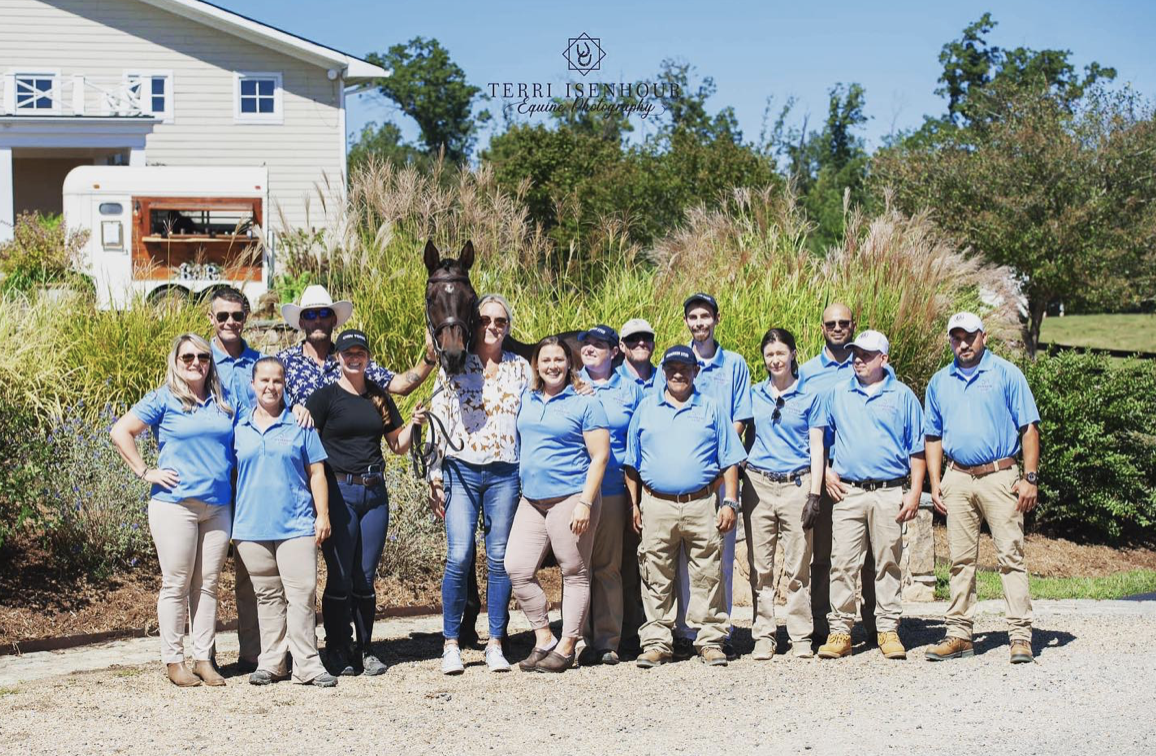
Part of the U.S. based Hyperion Stud Team after hosting a successful Holsteiner Verband inspection in September. Chin Tonic HS came for a meet and greet and is with the team.
Vicky began breeding horses 16 years ago with a focus on the stallions. She has a unique understanding of the entire process and an in-depth knowledge of pedigrees. The goal is always to breed a top-quality horse, it doesn’t happen every time, but it is what breeders need to strive for.
“We have to be selective with stallions and mares and only breed the best ones. Just because it can be bred or breed, doesn’t mean it should,” Vicky says. “Stallions are approved because they should be bred – they are father horses and this is why they are selected by the studbooks. Maybe 10% of all colts become approved stallions and it’s critical that the mares used for breeding are chosen because they have the genetics to give. Mare owners must be selective and smart about what stallions they choose for their mares. Over time the horses have been getting better, but we also need new blood.”
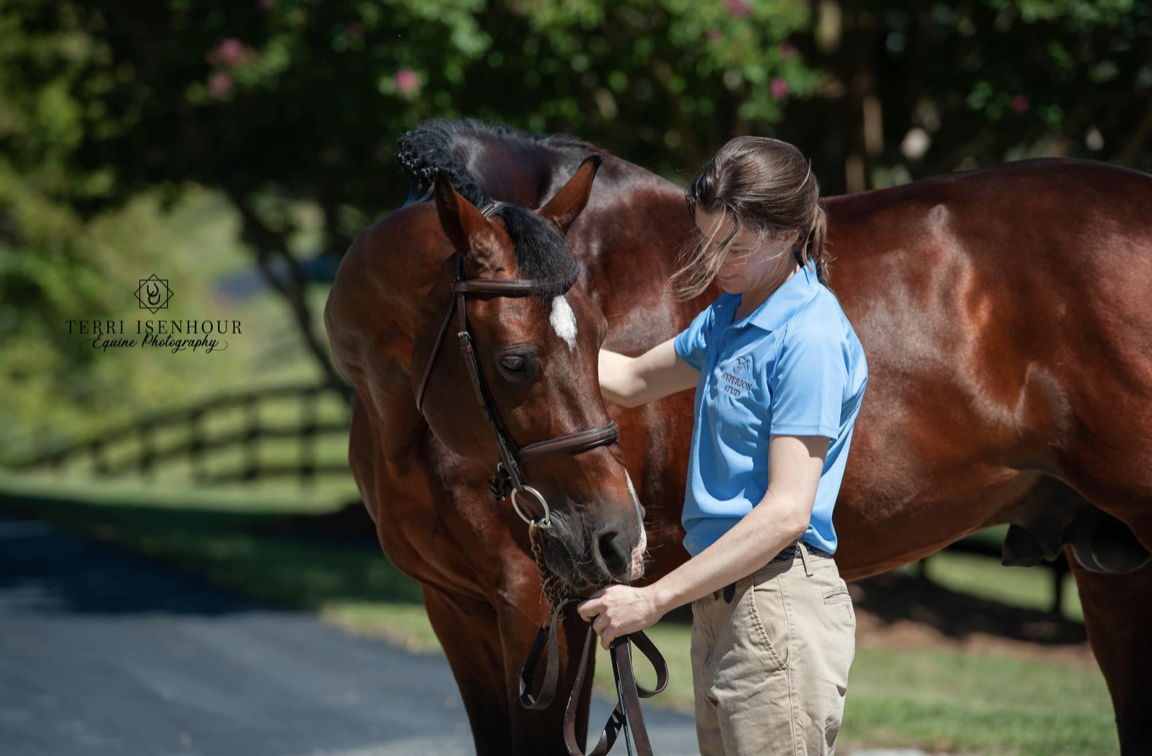
Dakota VDL.
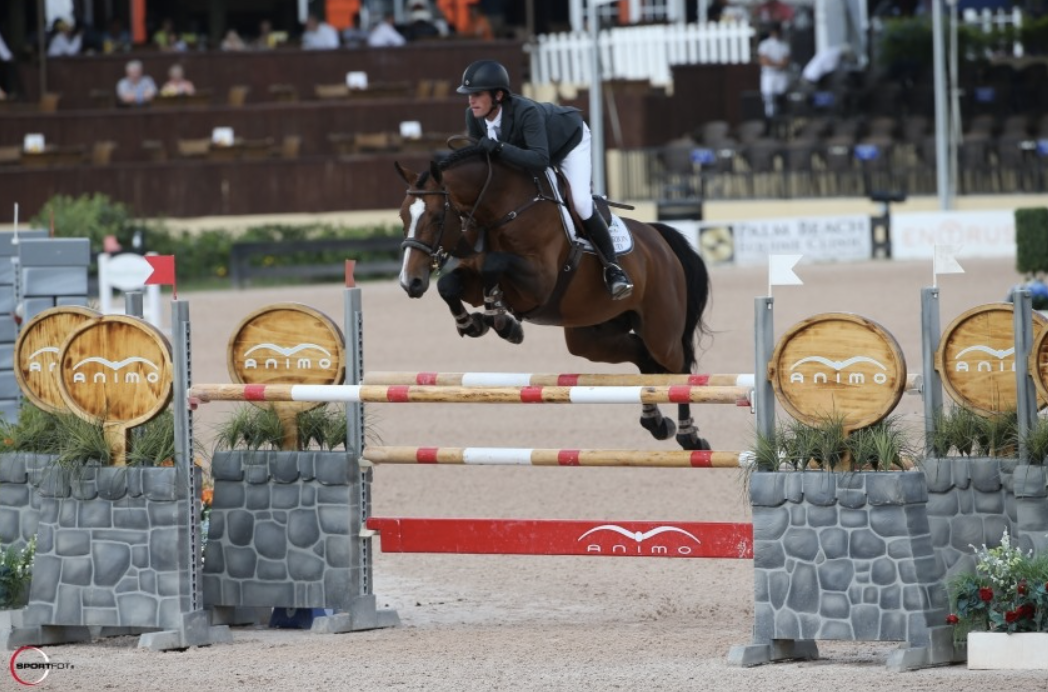
Chin Quidam VDL.
Hyperion Stud still has their original crew of stallions, including Imothep, Chin Quidam VDL, and Dakota VDL. Vicky is also excited about the young stallions she’s developing in Europe and in the U.S.
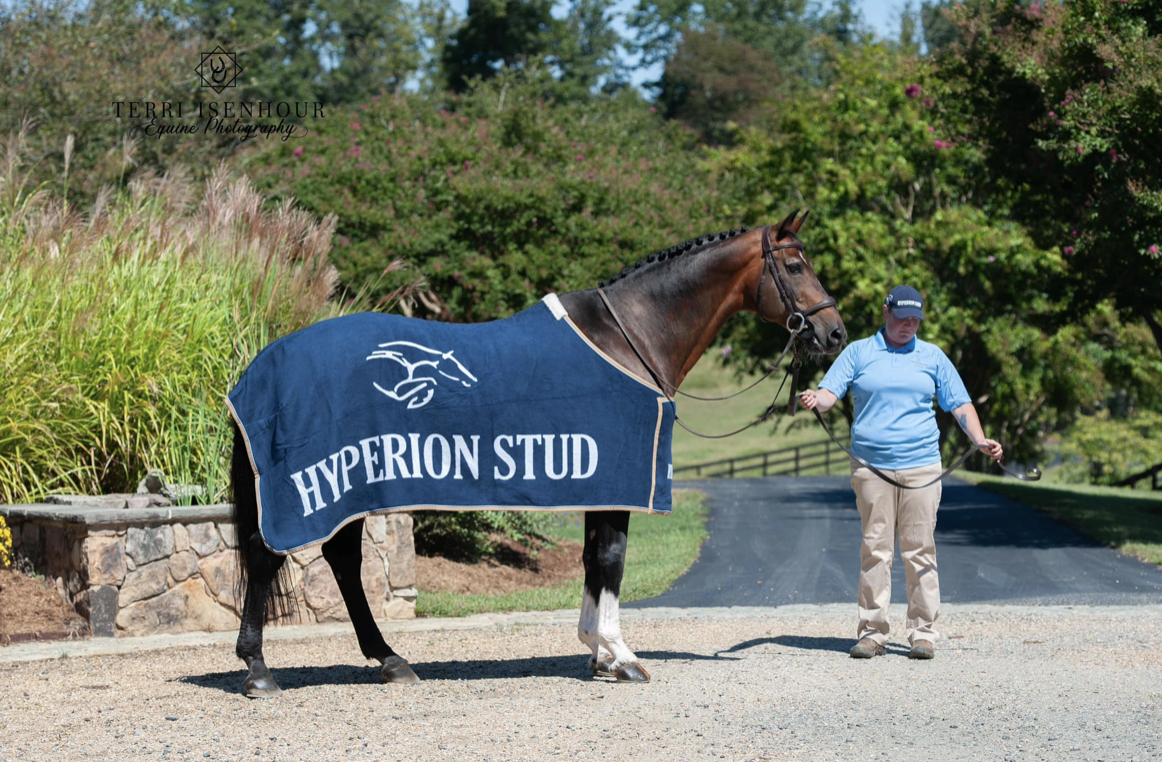
Imothep
Imothep will be 21 in May, and some of his best offspring are from recent years. “People are shy about using unproven stallions in the United States; it’s tough because the stallions are older before a lot of people are convinced to select them for their mares. Imothep is used by mare owners in multiple disciplines, and Chin Quidam is proving more and more to be an exceptional breeding horse by offering scope and blood.”
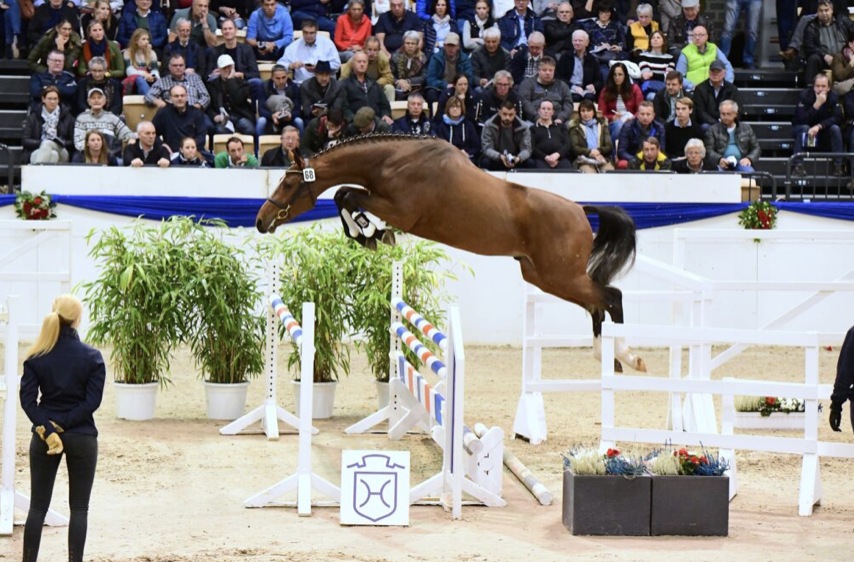
Urthago
One of their younger stallions, Urthago (v. Uriko/My Lord Carthago/ Casall/ Carthago stamm 474a) was approved by the Holsteiner Verband in Germany in 2019; Vicky purchased his dam, Freyja HS, when she was in utero and began breeding her at age three. She has produced three full siblings to Urthago. They are all a little different from each other, and Vicky says that each one seems to improve upon the previous one.
“Urthago has a super-interesting pedigree,” she says. “We have a few foal crops from him now, and with the mares we have used, the offspring have been exceptional. All of them have been premium foals with several scoring championship points. Urthago is a stallion for the future; and we need to put our money behind the stallions of the future. They build off the old-school bloodlines and have higher-quality foals. These stallions will create new standards in breeding as we watch the sport evolve and require horses with more agility, ability, and blood. A modern twist on the foundation stallions seen through many pedigrees.”
Cash Money HS (v. Cash and Carry/ Acorado/ Ramiro stamm 776) is an up-and-coming stallion, also in Vicky’s European stables. They started breeding him this year and are doing his stallion performance testing now. They plan to freeze some semen and offer that to breeders in the future. “Cash Money HS is long-legged, strikingly beautiful, athletic and very rideable. We look forward to seeing his first foal crop in 2024” she says.
The Pedigree Factor
Vicky has a selection process for her stallions and the first criteria is pedigree; the bloodlines have to be something that people can use, and the pedigree should work with a variety of mares.
“We have a young stallion being prepared for the Holsteiner Verband in the United States, his pedigree is an older family line with more modern elements, and you can use his pedigree on almost any mare in this country, it’s a very versatile pedigree,” she says.
Stallion owners also need to consider the mare base when selecting stallions because there is a lot of competition, and the stallion owner must have bloodlines that people want or need. There is a small mare market in the United States, so it’s even more important for stallions here to have versatility in their pedigree. Naturally, the stallion also needs to be talented, athletic, and he must have the genetics to give as well as the mare.
“I used all my best mares with Urthago and got top foals of all different types,” Vicky says. “He has genetics to give. The stallion has to have the ability to pass on the full force of his family line because they can’t just be pretty, that’s why the pedigree is important. Research and see what bloodlines go with what and don’t sacrifice real quality for looks.”
Next, Vicky considers temperament because no one wants to deal with an unruly horse. The first two criteria – pedigree and temperament – are the most important. Then comes conformation, type, ability, and others. She starts ticking the boxes after the first two are met.
The Selection Process
Hyperion Stud has new groups of colts every year, and Vicky is always looking for ones with stallion potential. Some colts are born with the “it” factor, and she and her team have a good feeling about them. Their official selection process begins when the colts are two years old. That being said, if they misbehave as colts, Hyperion Stud doesn’t want them as a stallion, and if they are really difficult, they geld them younger.
While they may start with five colts that they’re considering each season, only one or two will move forward to a studbook selection process.
Stallion selection is extremely exclusive and can be elusive for many, and only the best make it into the studbooks each year. Vicky points out that in 16 years of breeding, she can count on two hands the number of stallions she’s had approved.
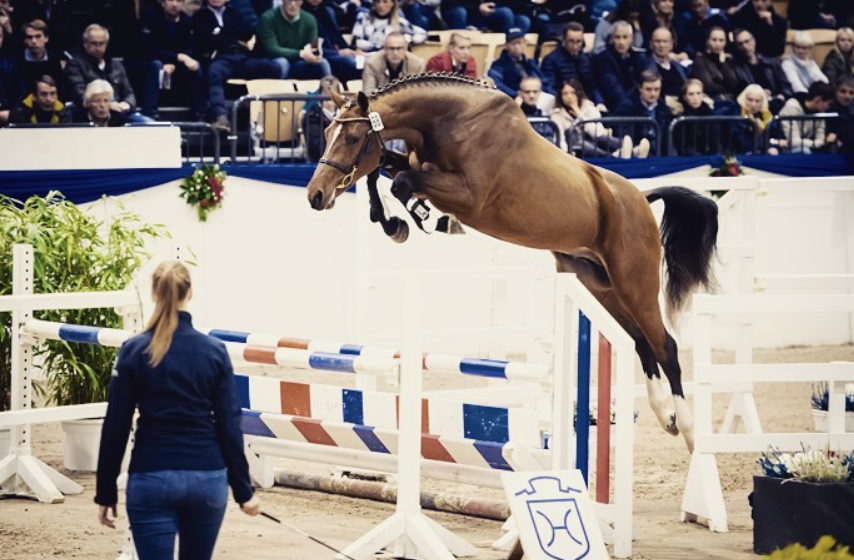
Urthago
“Urthago went through testing and is fully licensed,” she says. “There was a huge amount of time, energy, money, and a team to complete the process. You need a system because it’s a difficult road to travel and can be discouraging. On the other hand, anyone who wants to have a stallion can skip a lot of the beginning process and go to an auction to buy one who has then been approved and ready to develop for breeding and sport.”
Sometimes a stallion’s career requires a pivot too. Vicky had a young stallion that her team raised and had approved, but he got unruly during transport and injured himself. They castrated him and have done so with older stallions too; she emphasizes that no one needs to deal with behavior issues. Everyone’s safety is of the utmost importance, and we must remember, that once they enter the breeding shed, bad behaviors can get much worse!
Can’t Touch This HS is another example of a pivot. He’s approved by two big stud books, but they made the decision to castrate him prior to importing him to California. He arrived and started winning competitions in his new division without any issues and it saved thousands on import fees as well as making his transition easier for himself and the people caring for him.
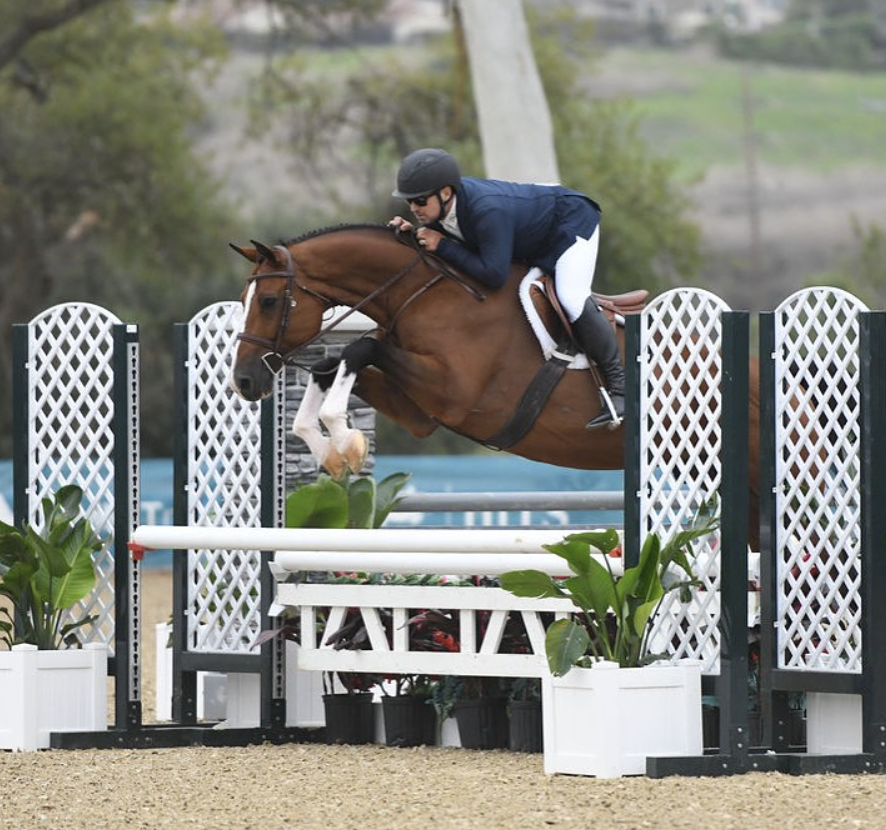
Can’t Touch This HS and Jason McArdle in October 2023.
“Making the decision can be hard though,” Vicky adds. “We put a lot of time, money, and training into the horse to support him as a stallion for our program. We may never recoup the money we spent on doing this and it’s something that you have to prepare for. As we made it easier for the horse and people, we do lose a “father” horse for the breeders.”
Vicky evaluates each decision and gets other professionals’ opinions too, considering what’s in the best interest of the horse and for Hyperion’s advertising and marketing. A lot of variables come into play on each decision.
“There’s always some risk and gambling involved too,” she says. “Will it work out the way we thought?”
Completing the Picture
Stallions are only part of breeding; we need the mares to complete the picture. “If the foals are average, everyone is quick to blame the stallion, but the stallion is just the seasoning – the salt and pepper,” Vicky says. “The stallion can’t go in and fix it all, at the end of the day it’s much more about the mare and her quality. There’s so much pressure on the stallions, and I work really hard to protect the reputation of my stallions.”
Vicky is selective about which mares she allows her stallions to breed. She needs to know the pedigree of the mares, and it needs to be acceptable for that stallion, because one bad foal becomes the stallion’s fault in the public eye of opinion.
“Everyone has to be responsible for their part to produce the best possible horses too, not every foal will be a top horse, but we all have to be responsible collectively about what’s being produced and strive to breed top horses,” she adds.
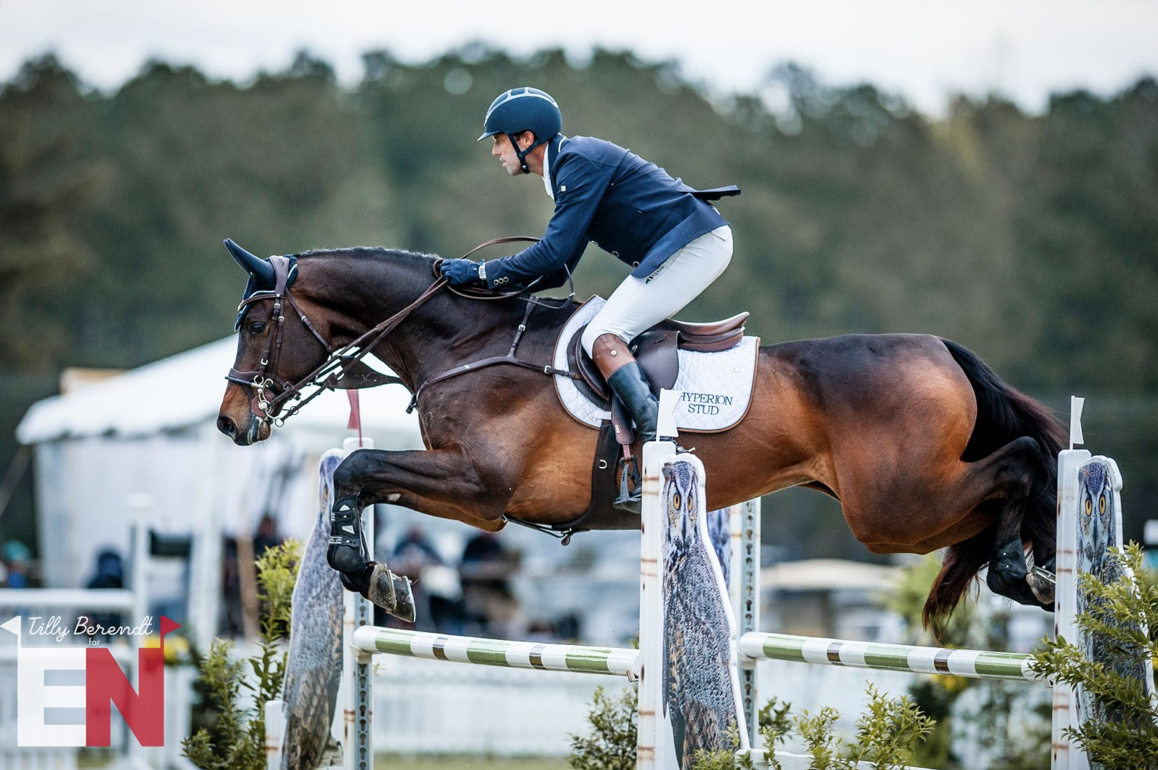
Chin Tonic HS and Will Coleman in October at Morven Park International & Fall Horse Trials.
If a mare owner doesn’t know what they’re doing, especially a first-time breeder, they can ask questions and learn. That's why Vicky understands her stallions and their pedigrees so well, then once she knows the mare breeders’ goals, she can help them. It’s about finding the stallion that suits the mare best, and if the right option isn’t in Vicky’s book, she helps mare owners find him elsewhere.
In our present moment, we are beginning to see a lack of hunter/jumper stallions being offered with fresh semen to the breeders. This was much the case many years ago when she started her business. Stallion ownership and approval in the U.S. is very difficult these days and it seems that the industry is struggling. There are stallion owners out there who are putting a lot of resources into their horses and businesses, and the competition from semen dealers selling European frozen semen is a big challenge. The European breeding culture and breeding stock approvals out does the U.S. annually. Lots of new young stallions are available to European breeders with fresh semen, but not to the U.S. breeders. This is a challenge once again that Vicky must meet and find a way through.
“I love the stallions the most and appreciate the mares too. The mare base in the United States is expanding and getting better and stallion owners need to meet that challenge over the coming years. If we can’t encourage and inspire more owners to breed, raise and develop the stallions, we’ll be left with mare owners who will look elsewhere. I’ve been doing this almost 16 years and I’ve put so much into these stallions. It would be a shame to disappear into the ether and not have a legacy for them or for Hyperion Stud. We’re looking forward to meeting this challenge in the coming years and continuing to grow our book and station for all the mare owners in the U.S.” Vicky concludes.
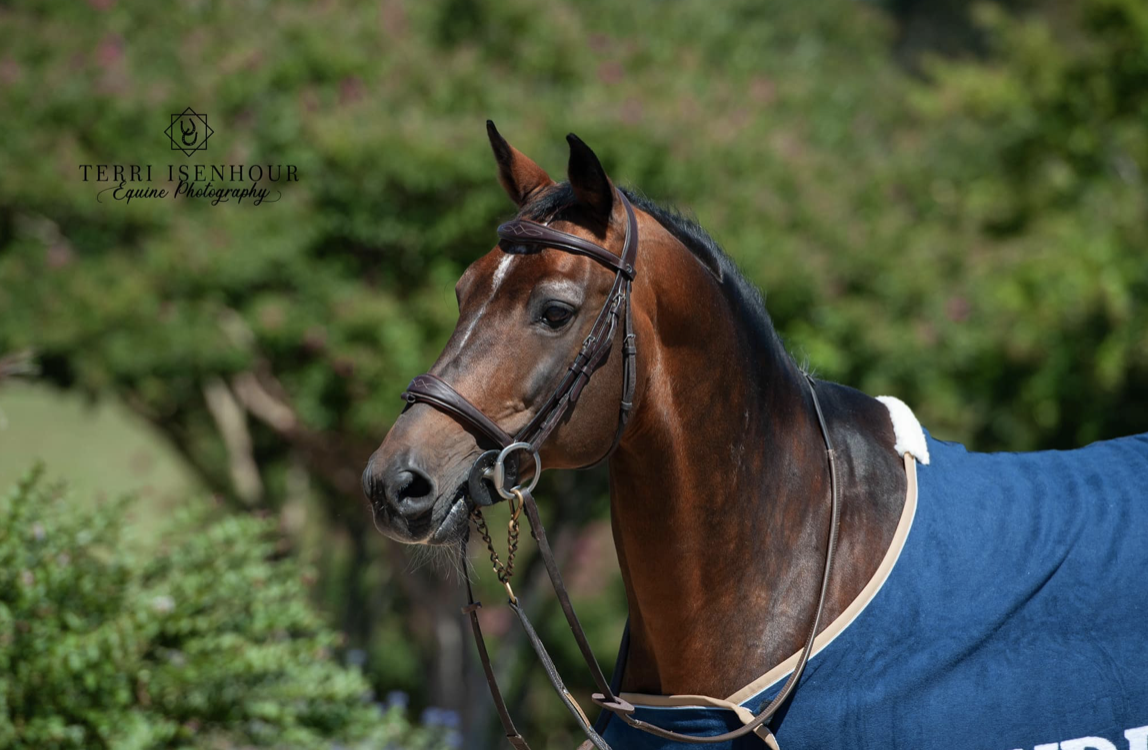
Imothep
All photos courtesy of Hyperion Stud
